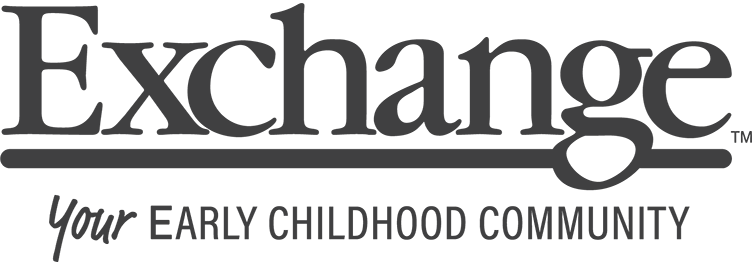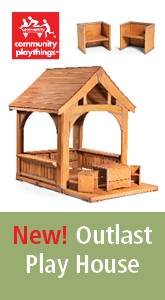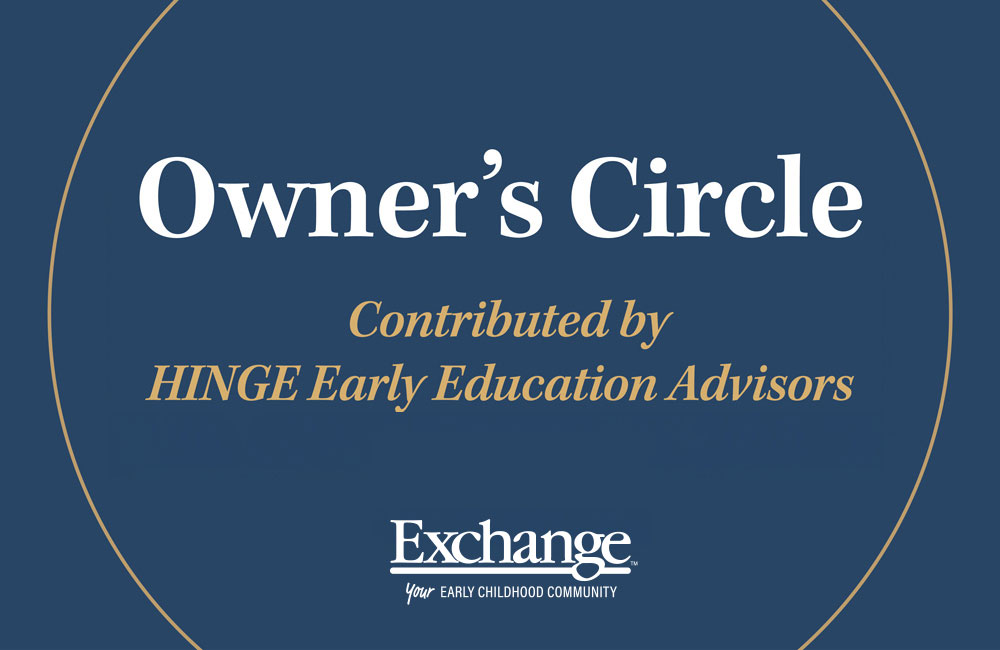Seeing you with this copy of Exchange in your hands (or reading the digital version on your tablet!) we suspect you are a leader in early childhood development or education or aspiring to be one. We are probably not far off the mark if we assume (a) you have a superhuman schedule, (b) you work on a shoestring budget, (c) you wear several hats, many of which you did not know or care about when you chose this work, and (d) you do all of this out of a deep passion for working with children, fostering their growth and supporting their families.
Our passion keeps us going when tasks and to-do lists pile up. But with so much to manage, how do we refine and hold onto our vision, our intention—and share it with those with whom we work? In their book Art of Leadership: Leading Early Childhood Organizations, Bonnie and Roger Neugebauer tell us those “who succeed, and go on to manage the best programs, are those who don’t cave in when the going gets tough, those who are determined, against all odds, to maintain a focus on delivering quality services, [those who] have a ‘ya gotta wanna’ attitude that consistently carries them to the finish line.” If in your own pursuit of quality services for children and families, the challenges that arise make you feel you need to do even more, and do it right now, read the quote again, especially the part about maintaining a focus on quality.
It is easy to equate non-stop hard work, strong emotions and long hours with passion and effectiveness. Effective, reflective leadership actually requires a different and intentional mindset. This mindset is grounded in passion. It necessitates hard work and decisiveness. It is ever focused on nurturing the diverse relationships that form the classrooms, programs and organizations we lead. Ironically, a reflective leadership mindset also requires pulling away, repeatedly and intentionally, from those ever-present tasks, the challenges and even the relationships we count on, to take a deep look inward. Only by focusing on our own role and effectiveness can we sustain managing the tasks and cultivating the relationships that support our life’s work.
The pathway we offer to articulating and developing a reflective and sustainable leadership mindset is based on course work for the Early Childhood Leadership Certificate program at the Center for Early Childhood Professional Development and Leadership in the University of Wisconsin-Milwaukee School of Continuing Education and draws heavily on the work of Daniel Goleman and Kevin Cashman. In brief:
- clarify the difference between managing and leading and develop a firm handshake between the two;
- explore the underpinnings of emotional intelligence starting with self-awareness and self-regulation;
- rely on improved self-awareness and self-regulation to tune into the finer details of our social environment and better understand the values, needs and motivations of others;
- apply our improved social awareness to authentically nurture the relationships that fuel our programs and organizations; and
- exercise these muscles of emotional intelligence from the inside out by taking time to develop a reflective practice.
ADVERTISEMENT
The Handshake Between Management and Leadership
The first step is to consider the situations and challenges we face to discern which require management and which require leadership. Management focuses on processes and systems. Good management practices help us keep things organized and moving so we can take decisive action, often relying on what has worked well in the past. This keeps our programs afloat and allows us to juggle the many hats we wear, creating space for other efforts. Leadership focuses on relationships, growth and vision. When it comes to working with people, solving problems and fostering a shared sense of purpose, getting more done in less time is not the answer, especially when we feel the management tasks piling up. Leadership requires a broader view, fostered not by efficiency but by intention and reflection, which in turn helps us dial in on what and how, exactly, we need to manage. As we recognize and honor the distinction between management and leadership, we also need to develop this conscious handshake between the two so management and leadership work together in a complementary way.
Leading With Emotional Intelligence
Whether we are out in front, leading others along, or lifting others up, leading from below, learning to tune into the thoughts and actions of ourselves and others in a non-reactive way gives us the stable footing to make a tangible impact. When—and before!—management challenges become leadership challenges, we turn to the four aspects of emotional intelligence outlined originally by psychologist Daniel Goleman to find that footing. Honing these four skills allow us to step back from feelings that muddy the waters and drive reactivity, paving the way for clarity and insight.
We start with self-awareness—what am I thinking, feeling or doing in this situation? Self-awareness keeps us grounded, honest and accountable as we name our own thoughts, feelings, actions and reactions.
Self-awareness is essential for self-management—making the effort to stop, notice and think before we speak or act so we can disrupt or redirect unhelpful impulses or moods, handling thoughts, feelings, actions and reactions in ways mindful of our higher goals.
Practicing self-awareness and self-management creates space for increased social awareness—tuning into what we know and need to know about the social context. Through self-awareness we expand our social/emotional vocabulary and through self-management we open space to notice the cues and conditions that impact how others might be thinking, feeling, acting or reacting. In her recent Exchange article on leadership, Heather Beaudin remarked, “As a leader it is critical to continuously reflect on not only your value system, but the values that educators and families hold.” (Exchange Oct/Nov 2018).
Finally, social awareness provides the necessary understanding to authentically nurture relationships, helping others to feel the support, confidence and motivation to do their part. We tune in with greater empathy to the individual and group interactions that make up the vital social dynamics in our organizations. Diverse perspectives become opportunities for problem-solving and innovation rather than triggers for confusion or conflict. With a stronger team and better communication skills, we wrap right back around to more effective management. This is the handshake.
(Note: While Goleman uses the terms self-management and relationship management, we believe the terms self-regulation and nurturing relationships better describe the combination of humanity, confidence and humility required for effective leadership, especially when serving families and children.)
The Role of Reflection
Informed by an understanding of emotional intelligence, we need to regularly free ourselves from management tasks to take a long view of both challenges and opportunities. Just like a good physical workout builds strength, endurance and flexibility, developing a reflective practice strengthens and refines our emotional intelligence. Self-awareness, self-regulation, social awareness and nurturing relationships are not “natural” skills that you either have or not.
And yet, as leaders with so much on our plates, how do we justify taking time out for reflection? Think back to the handshake between management and leadership. In our busy worlds, it is easy to say we do not have time. But if we do not take time for reflection, we simply stay right where we are, as the fuel to move through—or improve—our daily tasks is consumed. In contrast, “Pause is the conscious, intentional process to move from control, content, and speed to the higher order principles of contribution, context and significance,” writes Kevin Cashman, in his book The Pause Principle. The people Cashman interviewed reported they most often had their big stroke of insight while they were in the shower or out for a run or walk. Insights happen when you are not looking for them, when you are not managing.
When we take time to reflect, not only do generative ideas and solutions emerge, we also have time to recognize, honor and maintain what is going well. Confidence and momentum grow to build on where we are toward where we want to go. No matter how efficient or hard working, leaders do not get things done alone. It is through relationships that we move things forward. Effective leadership culminates in impacting and inspiring others, but it always begins within. Reflective practice is not something we do when we have time. It is something we must make time to do. To get started, we offer specific reflection points in the side bar, to hone the emotional intelligence skills needed to lead and keep our passion for early childhood alive.
When we have practiced self-awareness, in any given interaction we more readily notice whether we are listening to learn or simply listening for an opening while plotting our next comment. This awareness triggers the self-regulation to stop and observe and the social awareness to nurture the relationship rather than inadvertently dismiss a critical concern or idea. In our growing awareness of ourselves, we will each see whether we have reached where we intended to go. We will see it in our relationships. It is an ever (r)evolving loop that really starts with knowing ourselves.
References
Cashman, K. (2008). Leadership from the Inside Out: Becoming a Leader for Life. Berrett-Koehler Publishers.
Cashman, K. (2011). The Pause Principle: Step Back to Lead Forward. Berrett-Koehler Publishers.
Goleman, D. (1995). Emotional Intelligence: Why It Can Matter More Than IQ. Bantam Books.
Goleman, D., Boyatzis, R. and McKee, A. (2001). Primal Leadership: Unleashing the Power of Emotional Intelligence. Harvard Business Review Press.
Kahneman, D. (2011). Thinking, Fast and Slow. Farrar, Straus and Giroux.
Related
ADVERTISEMENT













